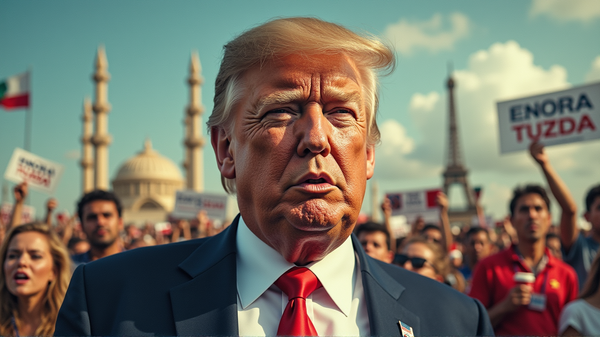Trading Turbulence: Trump's Tariff Strategy Raises Recession Alarms

A Rising Financial Concern
In recent days, whispers have grown louder on Wall Street as signs suggest the U.S. economy is teetering on the brink of a recession. The catalyst? Newly announced tariffs by President Trump, painting a picture of uncertainty and economic tension. According to CBS News, Goldman Sachs economists have raised the stakes, now estimating a 45% chance of a recession, an increase from their previous 35% forecast.
Unveiling the Problem: The Tariff’s Immediate Impact
The announcement of a sweeping 10% global tariff on U.S. imports and reciprocal duties set to affect 90 countries has shaken confidence. Analyst reports highlight a string of worries about potential damages to economic growth. The initial impacts may seem numeric, but the personal and systemic ripples could soon touch every corner of the market.
Defining Recession
But what precisely constitutes a recession? It’s vital to understand that, as per the National Bureau of Economic Research, an economic downturn isn’t just a fleeting dip. A recession, as defined, is a persistent decrease in economic output, typically marked by two consecutive quarters of negative growth.
Wall Street Voices Echo Warning
Top figures in finance, such as JPMorgan’s Jamie Dimon, have expressed growing concerns about the tariff strategy’s unpredictable trajectory. The fear is real: investments might dry up and inflation could rise, turning the wheels towards a full-blown recession. “Uncertainties surrounding the new tariff policy could dampen growth,” Dimon warns.
Likewise, hedge fund manager Bill Ackman starkly criticized comprehensive tariffs as risking an “economic nuclear war.” Such alarming language underscores the anxiety swirling through trading desks and boardrooms alike – a sentiment reverberated among many financial leaders.
In Defense of Trade Strategy
Despite skepticism, Trump’s administration stands firm, defending the trade policy changes. Notably, Commerce Secretary Howard Lutnick emphasized the strategy as an effort to “reset global trade,” aiming to bolster domestic factories and restore American economic dominance.
U.S. Treasury Secretary Scott Bessent, on various platforms, dismissed recession fears outright, instead pointing to ongoing strengths as cause for optimism. Yet, as signs of slowed growth emerge, the spotlight remains on the Federal Reserve’s stance and future interest rate decisions.
Final Thoughts
The coming weeks and months may prove critical in determining the U.S. economic path forward. With provocative headlines and fluctuating forecasts, stakeholders across the spectrum brace for potential impacts on their investments, livelihoods, and the wider economy. As the dust settles from these bold tariff moves, all eyes will remain on economic indicators to chart a course through these turbulent financial seas.




